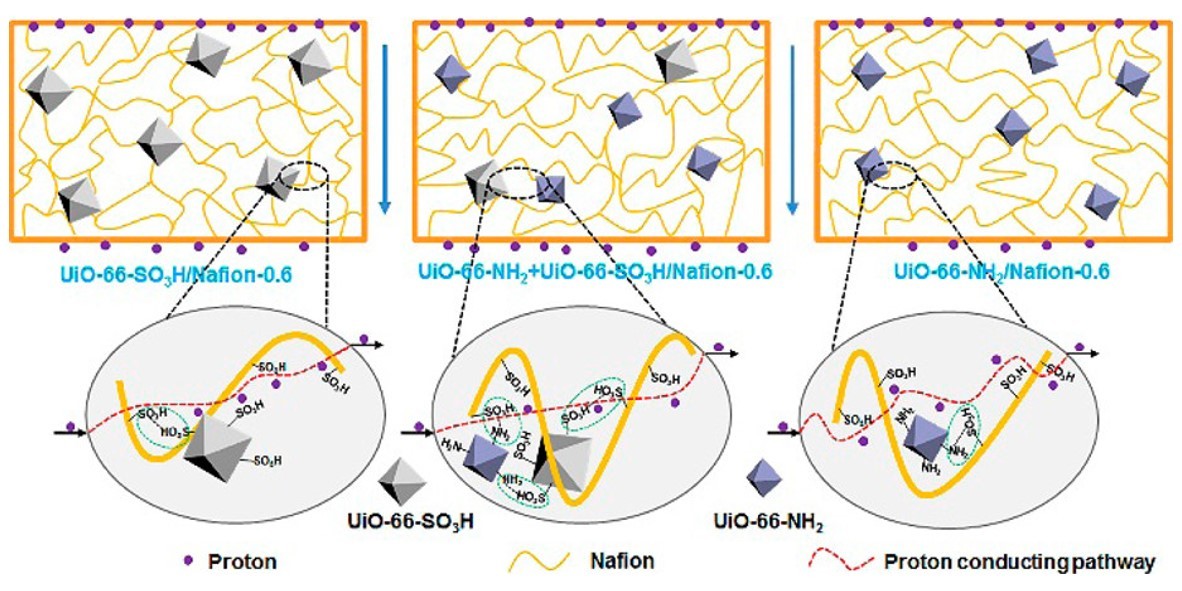Proton Conductivity of Proton Exchange Membrane Synergistically Promoted by Different Functionalized MOFs
Citation
Zhuang Rao, Beibei Tang, and Peiyi Wu*. Proton Conductivity of Proton Exchange Membrane Synergistically Promoted by Different Functionalized Metal–Organic Frameworks. ACS Appl. Mater. Interfaces 2017, 9, 22597-22603.
Abstract
In this study, two functionalized metal–organic frameworks (MOFs), UiO-66-SO3H and UiO-66-NH2, were synthesized. Then, different composite proton exchange membranes (PEMs) were prepared by single doping and codoping of these two MOFs, respectively. It was found that codoping of these two MOFs with suitable sizes was more conducive to the proton conductivity enhancement of the composite PEM. A synergistic effect between these two MOFs led to the the formation of more consecutive hydration channels in the composite PEM. It further greatly promoted the proton conductivity of the composite PEM. The proton conductivity of the codoped PEM reached up to 0.256 S/cm under 90 °C, 95% RH, which was ∼1.17 times higher than that of the recast Nafion (0.118 S/cm). Besides, the methanol permeability of the codoped PEM was prominently decreased owing to the methanol trapping effect of the pores of these two MOFs. Meanwhile, the high water and thermal stabilities of these two MOFs were beneficial to the high proton conductivity stability of the codoped PEM under high humidity and high temperature. The proton conductivity of the codoped PEM was almost unchanged throughout 3000 min of testing under 90 °C, 95% RH. This work provides a valuable reference for designing different functionalized MOFs to synergistically promote the proton conductivities of PEMs.


